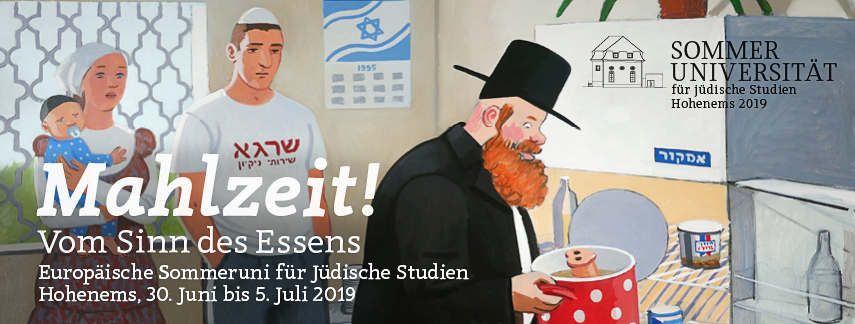|
Do, 04. Jul 2019, 20:00-21:30 Uhr
Fusion. Representation of Food in Israeli Art as Signifier of Myth and Identity
Öffentlicher Vortrag von Dr. Smadar Sheffi (Tel Aviv), im Rahmen der Sommeruniversität 2019 (in englischer Sprache) In Israel, as in other immigrant societies, cuisines signify much more than merely different cooking traditions. They are classified as „high“ and „low,“ acknowledging the cultural refinement of the ethnic group from which they stem. Representation of food in art encapsulates issues of power and construction of identity: who is the depicter and what does the representation serve? Do the images portray a singular group or does it serve ideals of nation-building? The collective trauma of the Holocaust has had a lasting and deep influence on past and present depictions of food in Israeli art and the ceremonies of consuming it. The lecture presents examples from performance art to sculpture and installation that address the way certain foods, such as chicken soup, have become iconographic emblems. A critical observation of the appropriation of local and regional dishes as „all-Israeli“ national dishes has been a recurring motif in Israeli art since the beginning of the millennium. The use of hummus (chickpeas) or felafel has become a politically (and emotionally) charged subject. Artists use these „all-Israeli“ symbols as a starting point for a discussion about Israeli versus western culture (mostly Anglo–American). The same foods alongside „flagship“ dishes of the communities from North Africa and Asia are frequently used for reflection on the fascination and rejection of the East by the Ashkenazi community, hegemonic in Israel until the 1977 elections. „The East“ refers to both the native Arabs and the Jewish communities from Arab-speaking countries. Processes of polarization that are deepening the differences between sectors of Israeli society are accelerating. Conflicts between religious fundamentalism and unabashed secularization are manifest in the ongoing battle about Kashrut supervision (Jewish religious dietary laws) as mandatory in the public sphere. The large communities of nonobservant Jewish immigrants, who arrived in the 1990s, were catalysts for many of the developments in the Israeli dining and drinking habits, and these are echoed in art that both employs and strengthens their symbolic status. Europäische Sommeruniversität für jüdische Studien, Hohenems 2019 ► Titelfoto: © Zoya Cherkassky |
Salomon Sulzer Saal Schweizer Str. 21, 6845 Hohenems +43 (0)5576 73989 office@jm-hohenems.at ► Eintritt frei! Keine Reservierung erforderlich Daten in Kalender übernehmen ►
Lade Karte ...
|

